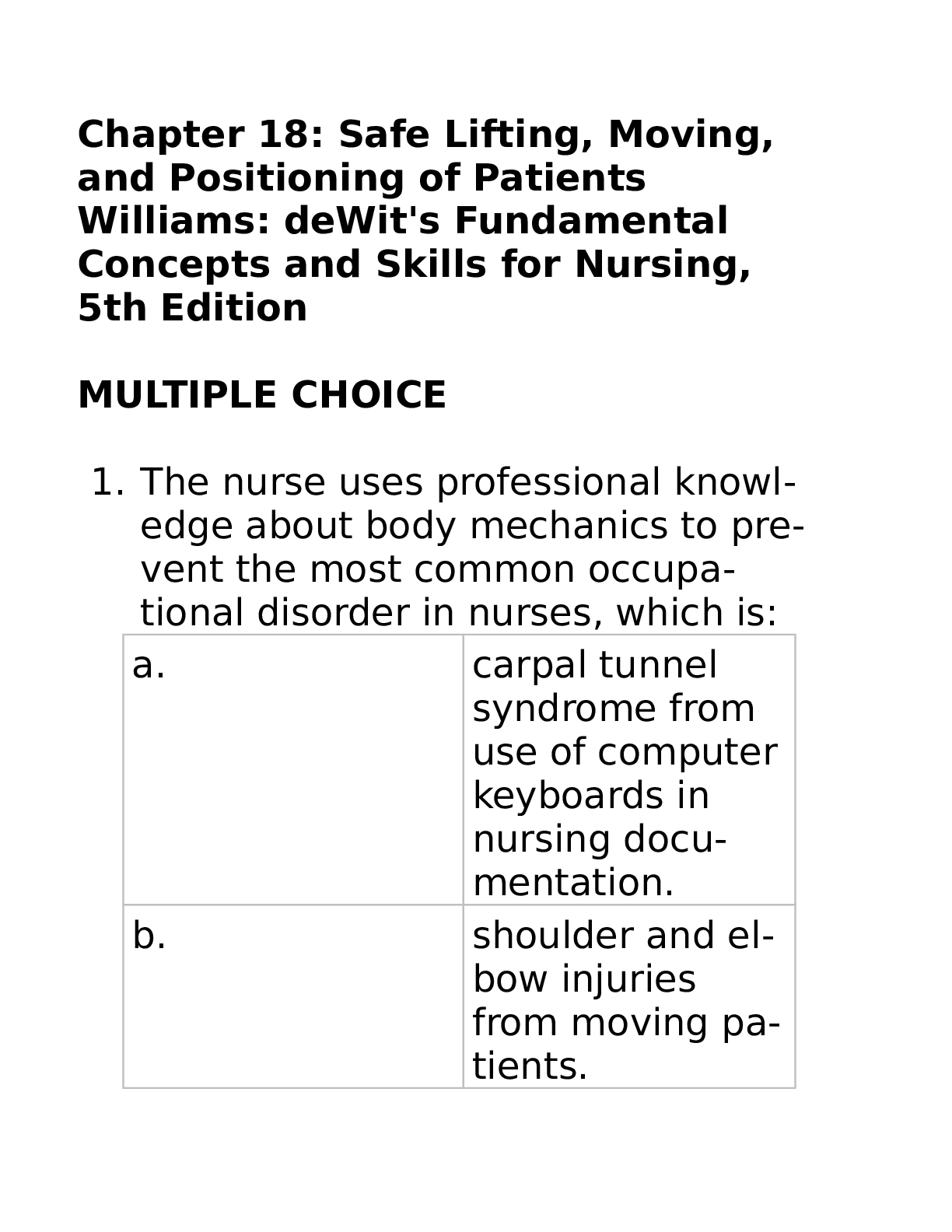Chapter 18: Safe Lifting, Moving, and Positioning of Patients Williams: deWit's Fundamental Concepts and Skills for Nursing, 5th Edition
Course
Project Management
Subject
Chemistry
Category
Questions and Answers
Pages
51
Uploaded By
ATIPROS
Preview 5 out of 51 Pages


Download all 51 pages for $ 11.00
Reviews (0)
$11.00
